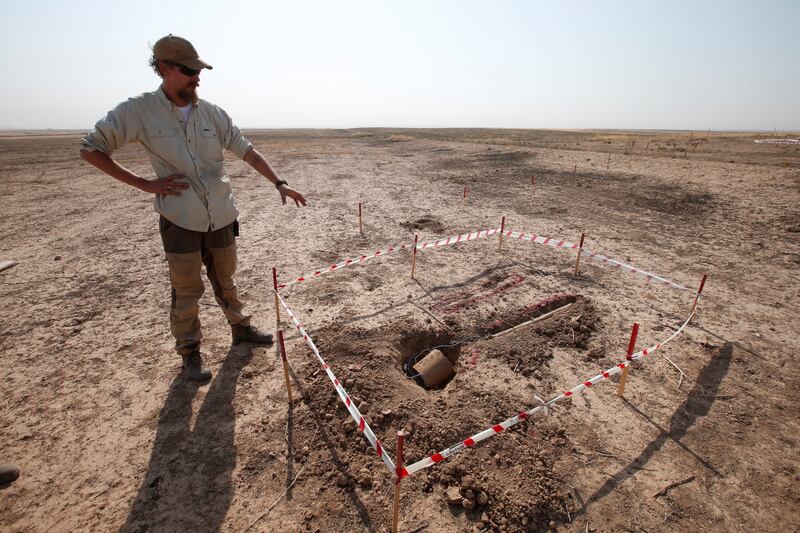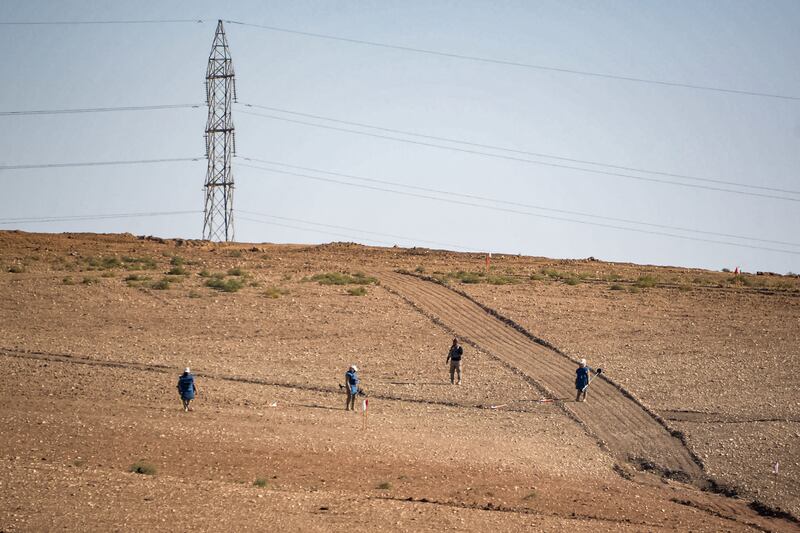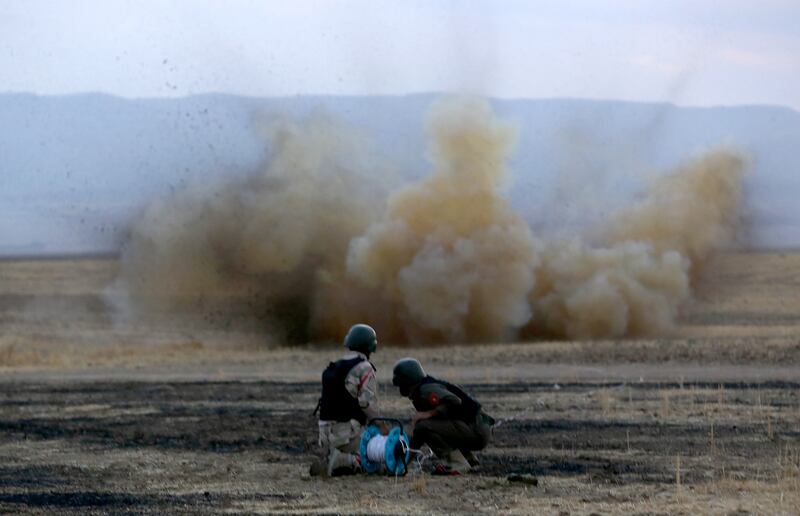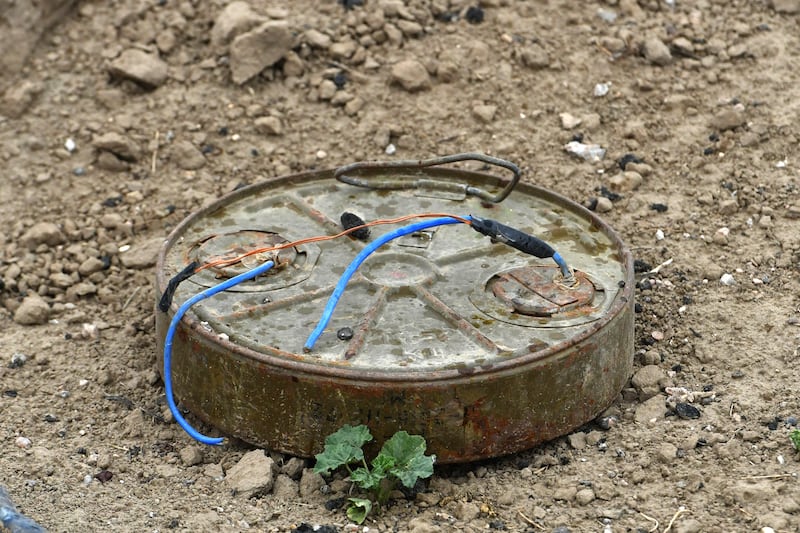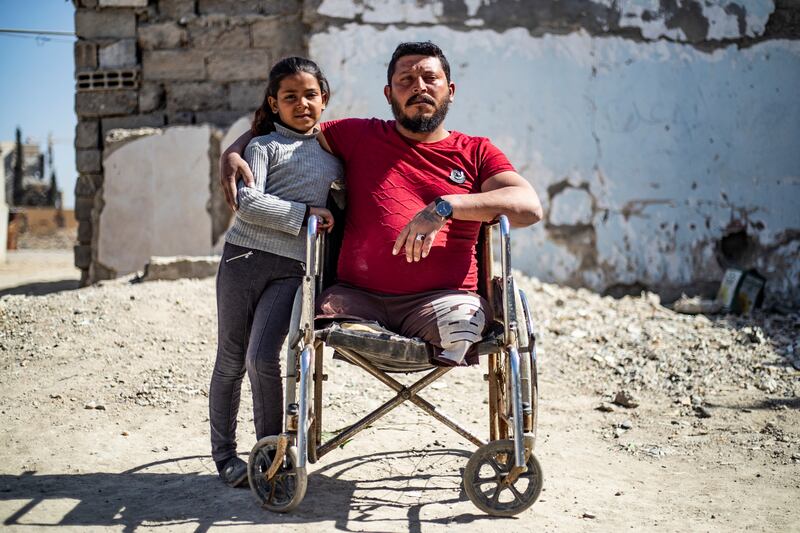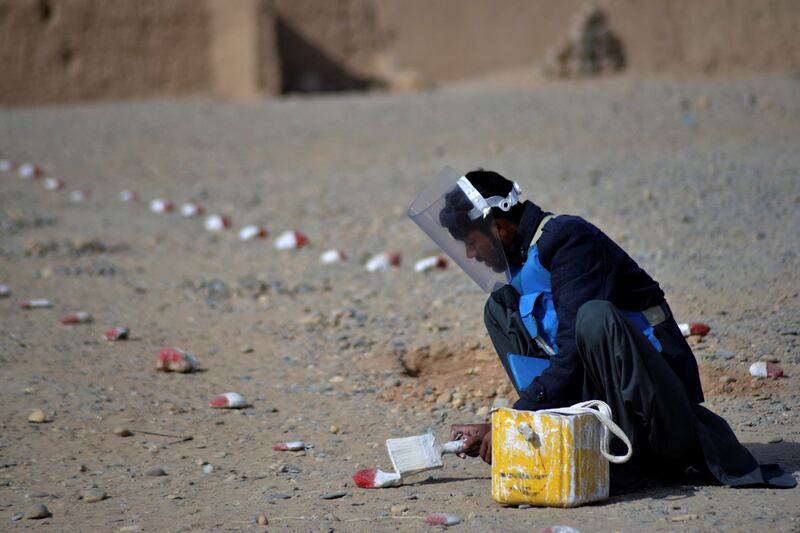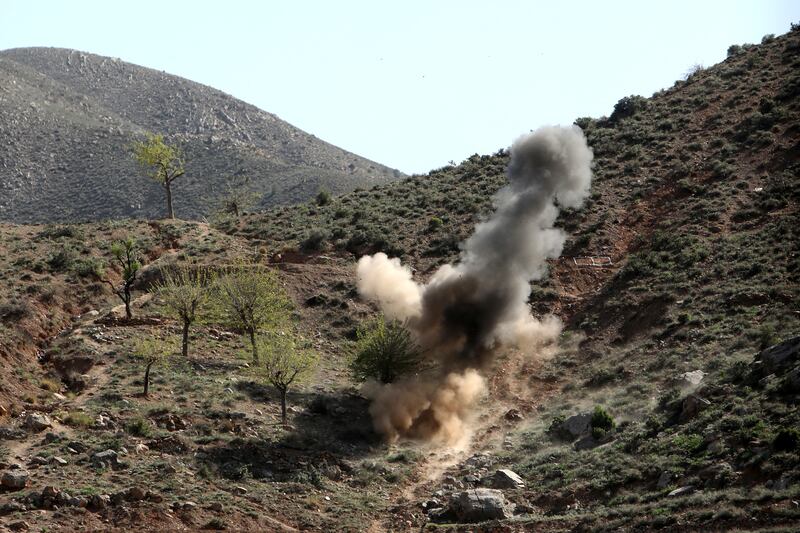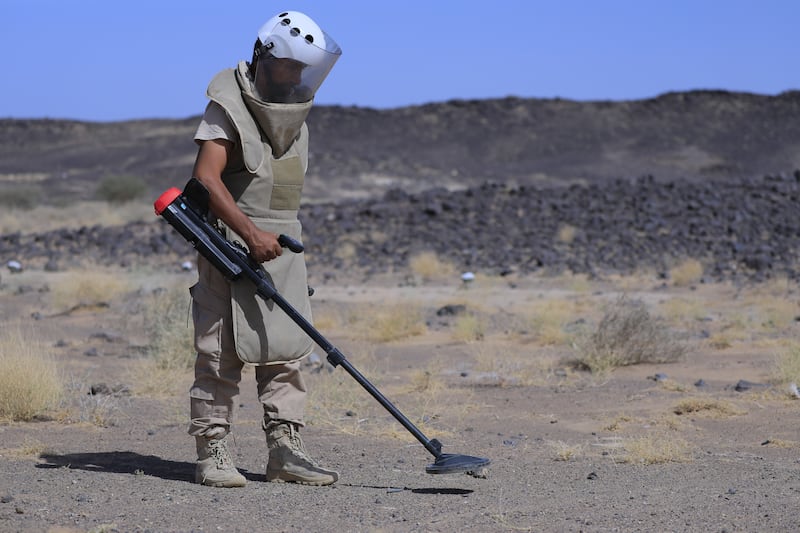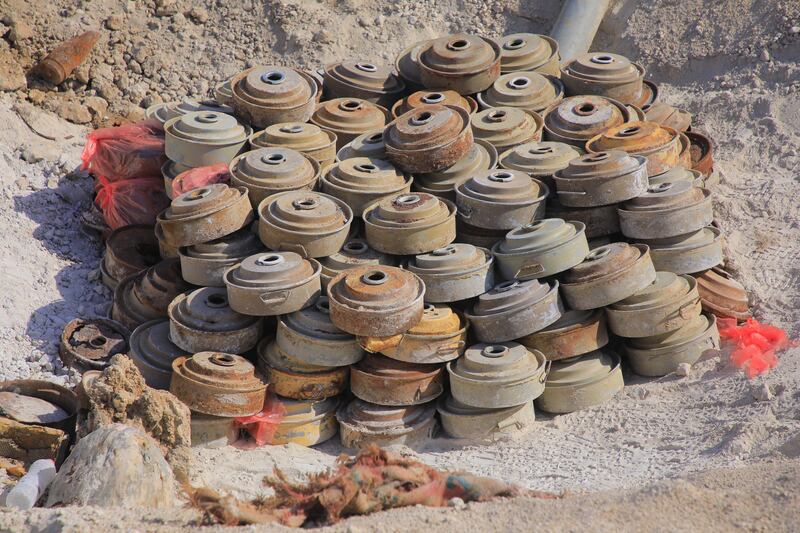As signatories to the Mine Ban Treaty prepare to meet in the 25th year of the ban, thousands in the Middle East continue to deal with the daily trauma of wounds caused by landmines.
The treaty, which prohibits the use, stockpiling, production and transfer of anti-personnel mines, has been signed and ratified by more than 130 nations.
More than 55 million stockpiled anti-personnel mines have been destroyed and extensive clearance operations carried out.
'My life changed for ever'
Syria has not signed the treaty. The country was found by the Landmine Monitor 2022 report released on Thursday to have recorded the highest number of casualties from landmines in 2021 — 1,227 people.
UN records show that in 2020 there was an average of 76 blasts involving ordnance in the country every day — equal to an explosion every 20 minutes.
Ahmad Omar, 21, is one of the victims of landmines in the country.
The eldest son of nine siblings, he was helping his father to till the land near Bishiriyeh village in Idlib province in August 2015 when he was wounded.
“I grabbed a round metal thing from the soil and there was a shepherd not that far from me, but he still recognised what it was," Omar said.
“He yelled that it was a bomb and I must throw it away at once.”
But it was too late. The remnant of a cluster bomb exploded, taking his hand with it and leaving his chest bloody and littered with shrapnel.
“My life changed for ever,” said Mr Omar, who was born with a severe speech impediment.
“I could no longer do what I can only do here, which is help my father farm the land."
How Princess Diana put the spotlight on the danger of landmines
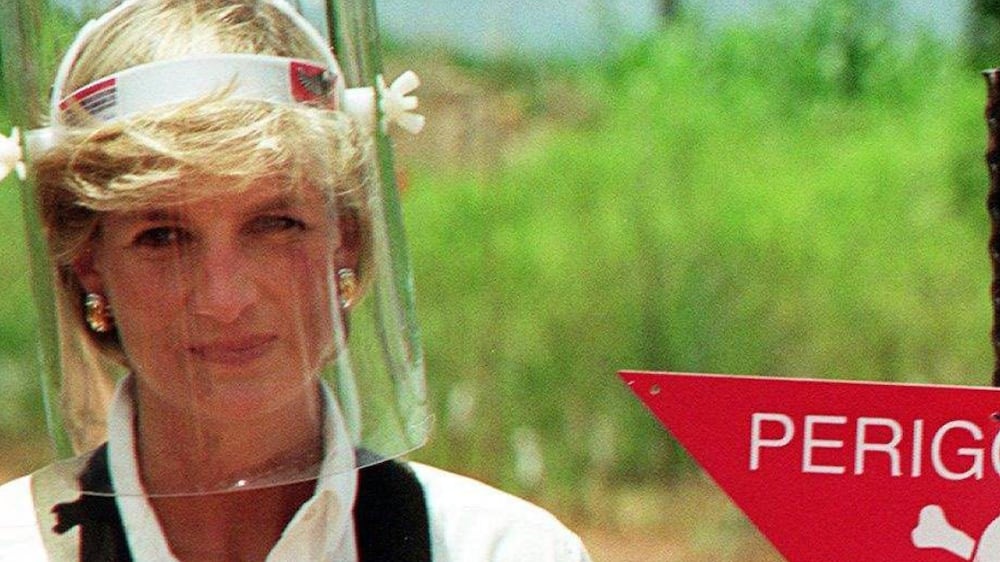
Syrian President Bashar Al Assad's regime lost control of Idlib in 2013-2014 amid the country's civil war.
Residents say the area was frequently bombed by Syrian warplanes at the time, not for direct military purposes, but to stop farmers from working the land where olives, figs and pistachios are grown.
A legacy of conflict
Afghan are also struggling to come to terms with the effect of mines and explosive remnants of war (ERWs) on their lives.
The Landmine Monitor 2022 report found the country, a signatory of the 1997 mine treaty, recorded more than 1,000 casualties in every year of the past decade.
Hussain Ahmadi lost both legs to an anti-personnel mine in 1990. He now leads awareness campaigns about the dangers of mines and helps to rehabilitate the wounded.
Mr Ahmadi, executive director of the Afghan Landmine Survivors Organisation, told The National that the situation in Afghanistan had worsened since the Taliban seized power in August 2021.
“It is an incredibly difficult time for organisations like ours,” he said.
The group used to have about 20 employees, but now relies on volunteers. Groups it once worked with have left the country because of security or funding problems.
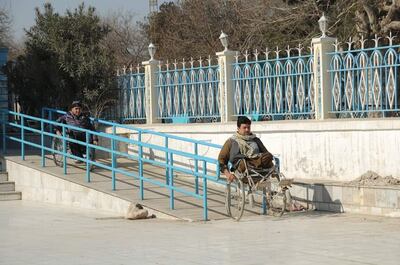
“We will have to shut our office in about two months as we are lacking support," Mr Ahmadi said.
"It's extremely hard for us to do so, as we know how much mine survivors and people with disabilities need us. We did everything possible but have no option but to close our programme.”
Even if the office finds the funding to remain open, Mr Ahmadi is worried about the safety of his volunteer workers.
In June 2021, 10 mine clearers working for the Halo Trust were killed by gunmen in the northern province of Baghlan.
There are similar fears in Iraq, where more than 200 people were wounded or killed by mines and ERWs in 2021.
Rahma Waleed volunteered for a mine clearing group for a year, until her nine-member team was caught in a bomb blast in July outside her hometown of Mosul.
“I was about to get out of the car when I heard a thud that rocked the vehicle,” she said.
“I tried to control myself, but sudden numbness developed in my legs.”
She called out to each member of her team members, before slowly getting to her feet to find them.
Seven wounded and two escaped unharmed.
“All of us were soaked with blood,” she said.
The trauma has left her unable to resume the essential work.
Meet the women that are helping to clear Iraq of landmines
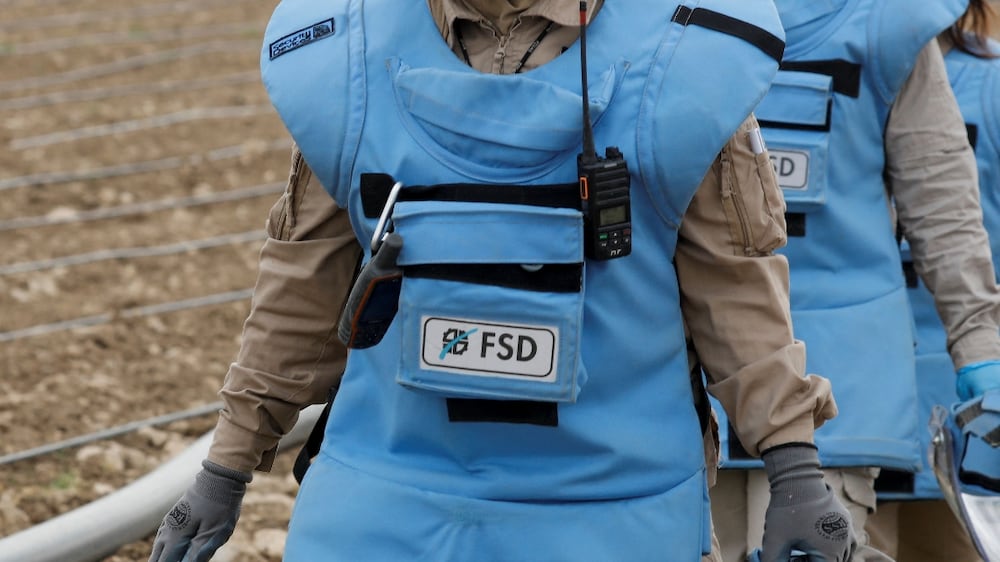
“I still hear the explosion whenever I put my head on the pillow. Sometimes I tremble and whenever I recall the incident I feel the numbness in my legs,” she said.
Mosul came under ISIS control as the group seized large areas of Iraq and Syria in 2014.
The city and surrounding areas were heavily damaged during the fight to free those areas.
Decades of war and internal conflicts have left Iraq with one of the highest numbers of landmines and unexploded ordnance.
Its Environment Ministry has said 34,208 civilians were killed or maimed between 2004 and 2021 due to explosive remnants.
Explosives were spread across areas spanning 6,022 square kilometres. About 53 per cent has been cleared, Iraq has said.
Mines and ordnance are still in 2,761 square kilometres of the country.
There are about 20 million mines in Iraq, according to government estimates.
The explosives can be traced as far back as the 1960s, when the Iraqi army launched a series of operations to quell a Kurdish uprising in the north.
Iraqi and Iranian forces planted mines along the border during the war between 1980 and 1988.
The situation worsened during the First Gulf War in 1991, and the 2003 US led-invasion of Iraq.
Explosive remnants and mines are a legacy of these conflicts and ordinary people are affected by them every day.
